Under a clear mountain sky, an Atayal boy of 12 prepares to transition into a man by way of a painful ceremony passed down by his ancestors. Like many boys his age, he has proven his valor and courage by mastering the art of hunting. In another village, a girl of similar age awaits her own passage into maturity after mastering her craft of weaving. Both subjects wait as a mixture of charcoal and pine tree oil is prepared, applied and slowly pushed under the sensitive skin on their cheeks and foreheads.
This narrative describes traditional facial tattooing, the most significant coming-of-age ceremony for the Atayal, one of Taiwan’s sixteen recognized indigenous tribes. Often referred to as a “cultural treasure,” this custom began to disappear when the Japanese controlled Taiwan from 1895 to 1945.
“My grandmother had facial tattoos, and they were very beautiful,” said cultural advocate and historian Kimi Sibal in a recent interview.
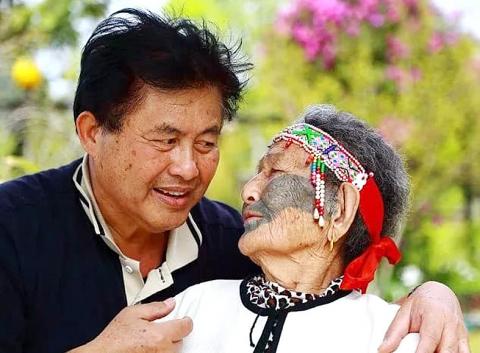
Photo courtesy of Kimi Sibal
When Sibal was seven years old he became intrigued by the distinct ash-colored markings on his grandmother’s face. It wasn’t until a family photoshoot that he ask her: “Why do you have those tattoos?”
Rather than the captivating story that Sibal had expected to hear, he was faced with a different response. “We mustn’t speak of it. I can’t tell you.”
INTOLERANT ATTITUDES
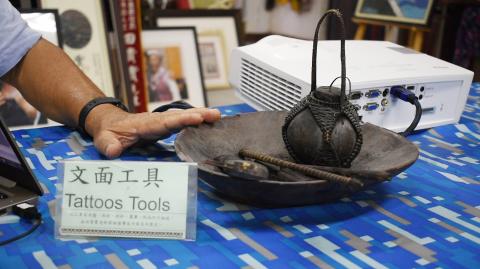
Photo: Sylvia Dean
During Japanese rule, sacred practices such as facial tattooing were prohibited due to intolerant attitudes towards indigenous communities. In an effort to exercise authority over a group seen by colonizers as savage, indigenous communities living in the mountains were driven down to flatter land, where they were easier to regulate and control. After years of oppression, his grandmother had been conditioned to be ashamed of the tattoos.
As a Hualien native and a member of the Seediq community, Kimi didn’t learn about his heritage until much later in life. After his grandmother passed away, Sibal felt as if he had lost the opportunity to find answers about his ancestors. It wasn’t until decades later, after he became a husband and a father, that he began to uncover the truth.
Sibal recalls an incident involving his son when he first began school that awakened him to the importance of learning about his background. The boy got into a fight with his classmates because they targeted his heritage, sneering that the tattoos worn by his ancestors made them look like monsters, and that he was from a bloodline of savages. Sibal resolved to both discover the story behind his own ancestry, and to share the true meaning behind the custom of facial tattooing.
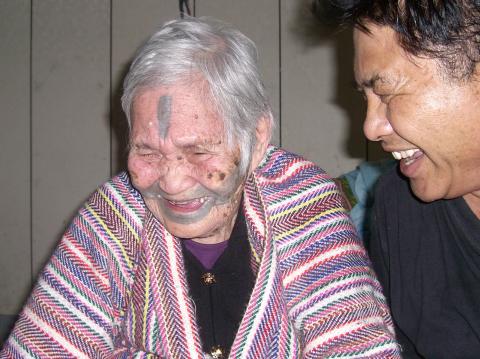
Photo courtesy of Kimi Sibal
“I took my camera, I took my voice recorder and I set out. I found that there were still many people who had tattoos,” he says.
Today, Sibal has dedicated years of his life to the documentation of this sacred practice, and displays an extensive collection of his work in Hualien. Today, there are only two remaining elders with facial tattoos — one of them is 98 years old, and the other is 99.
“They won’t be here for much longer. I came to think, why have I been researching these people for all these years? Well, the words they speak are filled with history. The words they speak are rich and wonderful,” Sibal says.
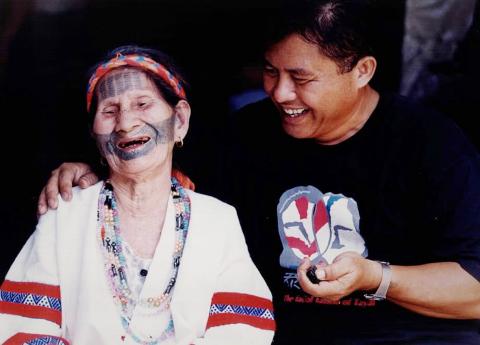
Photo courtesy of Kimi Sibal
Sibal has captured hundreds of portraits of tattooed elders and has written many books about this symbolic custom.
“After years of research, I finally began to realize why thousands of people passed down these tattoos, their meaning and their spirit,” Sibal says.
SIGNIFICANCE OF TATTOOS
He lists four main reasons for the preservation of facial tattoos: Tribal recognition, protection against evil spirits, access to the afterlife and beauty.
Although the meanings behind these facial tattoos are representative of honor and high achievement, with the advent of colonization, they have often been falsely interpreted. As Sibal’s son discovered at school, it’s common for groups that practice facial tattooing to be falsely marked as barbaric, uncivilized and criminal.
“As long as we are here, no matter what we do, we are not treated fairly on this earth. There is no mutual respect,” Sibal says. “What they write about our culture, about our language, is in the eyes and interpretation of the government. They can write whatever they want, but today I am doing this honorable work, because the ones that have these tattoos are my own ancestors.”
Through his work documenting the lives of Atayal elders, Sibal’s legacy will remain for many years to come.
“The most important thing is for these tattoos to be recorded,” Sibal says. “We must let the next generation know that the markings their ancestors have on their face represents bravery and capability.”
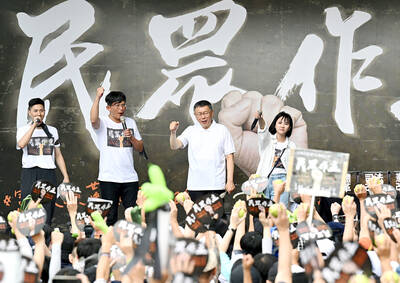
In the next few months tough decisions will need to be made by the Taiwan People’s Party (TPP) and their pan-blue allies in the Chinese Nationalist Party (KMT). It will reveal just how real their alliance is with actual power at stake. Party founder Ko Wen-je (柯文哲) faced these tough questions, which we explored in part one of this series, “Ko Wen-je, the KMT’s prickly ally,” (Aug. 16, page 12). Ko was open to cooperation, but on his terms. He openly fretted about being “swallowed up” by the KMT, and was keenly aware of the experience of the People’s First Party
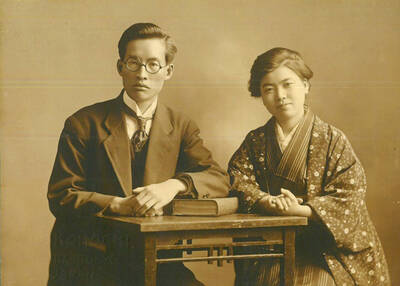
Aug. 25 to Aug. 31 Although Mr. Lin (林) had been married to his Japanese wife for a decade, their union was never legally recognized — and even their daughter was officially deemed illegitimate. During the first half of Japanese rule in Taiwan, only marriages between Japanese men and Taiwanese women were valid, unless the Taiwanese husband formally joined a Japanese household. In 1920, Lin took his frustrations directly to the Ministry of Home Affairs: “Since Japan took possession of Taiwan, we have obeyed the government’s directives and committed ourselves to breaking old Qing-era customs. Yet ... our marriages remain unrecognized,

During the Metal Ages, prior to the arrival of the Dutch and Chinese, a great shift took place in indigenous material culture. Glass and agate beads, introduced after 400BC, completely replaced Taiwanese nephrite (jade) as the ornamental materials of choice, anthropologist Liu Jiun-Yu (劉俊昱) of the University of Washington wrote in a 2023 article. He added of the island’s modern indigenous peoples: “They are the descendants of prehistoric Formosans but have no nephrite-using cultures.” Moderns squint at that dynamic era of trade and cultural change through the mutually supporting lenses of later settler-colonialism and imperial power, which treated the indigenous as
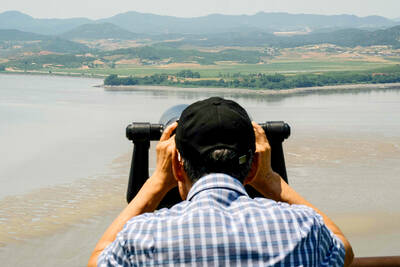
Standing on top of a small mountain, Kim Seung-ho gazes out over an expanse of paddy fields glowing in their autumn gold, the ripening grains swaying gently in the wind. In the distance, North Korea stretches beyond the horizon. “It’s so peaceful,” says the director of the DMZ Ecology Research Institute. “Over there, it used to be an artillery range, but since they stopped firing, the nature has become so beautiful.” The land before him is the demilitarized zone, or DMZ, a strip of land that runs across the Korean peninsula, dividing North and South Korea roughly along the 38th parallel north. This